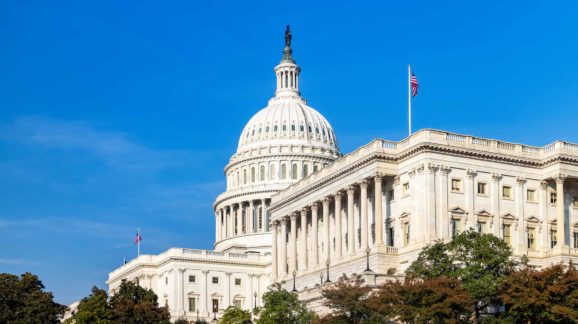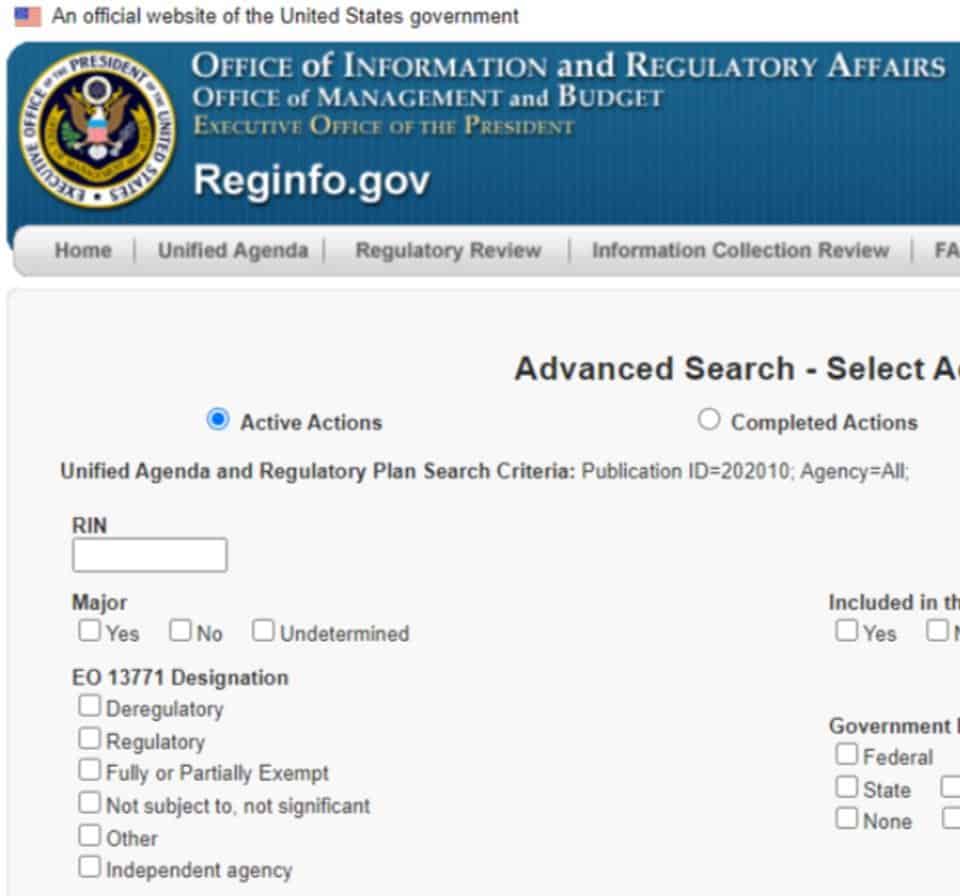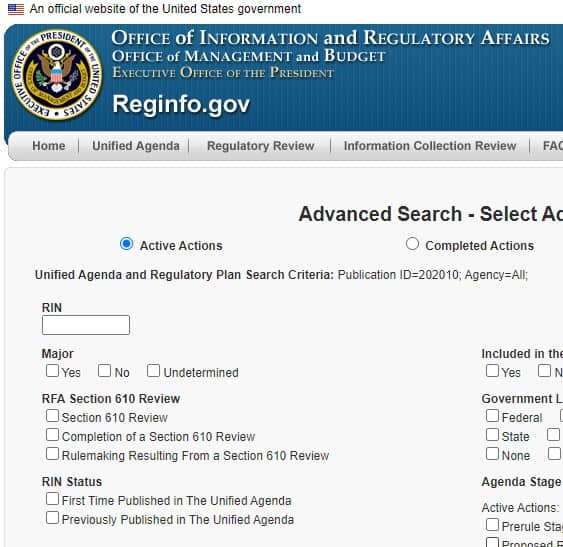In Blow to Disclosure, Unified Agenda of Federal Regulations Database Removes “Deregulatory” Designation

Photo Credit: Getty
In a setback to transparency alongside Joe Biden’s program to eliminate the disclosure of guidance documents via portals on agency websites, the Unified Agenda of Federal Regulatory and Deregulatory Actions “advanced search” database has removed the Trump-era designation of whether federal rules and regulations in the pipeline are “Deregulatory” or not.
Several other categorizations useful for researchers have been removed as well.
Biden’s day one “Executive Order on Revocation of Certain Executive Orders Concerning Federal Regulation” is the root of several new eclipses of administrative state transparency.
Even the annual “Regulatory Reform Results” the Trump administration provided on the defunct one-in, two-out” program have vanished from the Unified Agenda landing page. (The archival link https://www.reginfo.gov/public/do/eAgendaEO13771 now opens to, “We are temporarily experiencing technical difficulties.”)
That one-in, two-out program, initiated in 2017’s E.O. 13,771 on “Reducing Regulation and Controlling Regulatory Costs, established a search option for “Executive Order 13771 Designation” for rules and regulations at the Office of Management as the screen capture below shows.

As the image shows, rules were classified and depicted in categories beyond “Deregulatory” and “Regulatory,” including “fully or partially exempt,” “not subject to,” “not significant,” “other,” and “independent agency.” This allowed other avenues of research, such as gauging these rules further at the completed, active, and long-term stages, and split up into economically significant, major, and other significant varieties.
Along with sparse specific and aggregate cost and benefit assessments, observers have never had great ability to distinguish between rules and regulations that are additive and subtractive in terms of burdens, although the former would be the norm. The new Trump designations would all have been useful to carry forward in subsequent administrations. Biden did not have to end it just because he ended two-for-one; that was a choice.
The Agenda’s specific inclusion of deregulatory actions enabled researchers and the public to isolate where agencies have classified rules as deregulatory or regulatory, and over time could have enabled assessing the extent to which elements of the regulatory enterprise were escalating or deescalating.
Other presidents issued deregulatory measures, but they did not attempt to lay a foundation for easing tracking of relevant metrics as the Trump administration attempted to do. The screen capture below shows Biden’s elimination of these reporting metrics, which have vanished from their former locale between “Major” and Regulatory Flexibility Act review.

The unfortunate part of all this is that rather than being eliminated, these kinds of disclosures should have been vastly expanded.
If similar disclosures were incorporated into the Federal Register and other outlets like the (not really) annual Report to Congress on regulatory costs and benefits, it could have made a significant difference to regulatory accountability.
In the scheme of things, these disclosures would have been more important than the particular cuts completed by the Trump administration, since the ongoing potential for scrutiny (now lost) would have better enabled watchdogs and better-informed legislators and judges.
Regulatory reporting that poorly distinguishes between rules and guidance documents affecting the private sector and those affecting internal governmental operations need to be improved well beyond what Trump did. Since Biden will apparently have none of that, future regulatory reforms in Congress, some of which are detailed in CEI’s Agenda for Congress, should reinstate Trump’s regulatory and deregulatory classifications and much else, along with harmonizing agencies’ confusing array of rule classifications.
Removing rule designations in the Unified Agenda database was a choice. As made plain in Biden’s January Modernizing Regulatory Review memorandum to executive departments and agencies, the notion of regulatory liberalization will play no role.